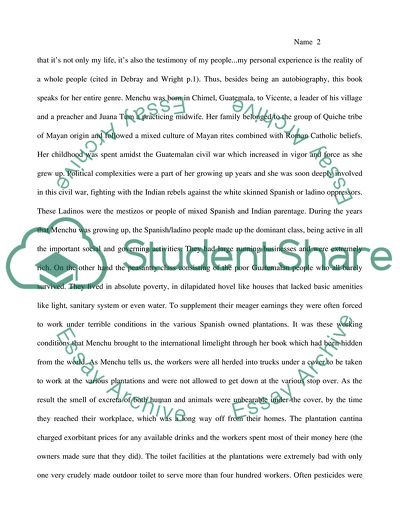Cite this document
(“Rigoberta Menchu An Indian woman in Guatemala Essay”, n.d.)
Retrieved from https://studentshare.org/miscellaneous/1555758-rigoberta-menchu-an-indian-woman-in-guatemala
Retrieved from https://studentshare.org/miscellaneous/1555758-rigoberta-menchu-an-indian-woman-in-guatemala
(Rigoberta Menchu An Indian Woman in Guatemala Essay)
https://studentshare.org/miscellaneous/1555758-rigoberta-menchu-an-indian-woman-in-guatemala.
https://studentshare.org/miscellaneous/1555758-rigoberta-menchu-an-indian-woman-in-guatemala.
“Rigoberta Menchu An Indian Woman in Guatemala Essay”, n.d. https://studentshare.org/miscellaneous/1555758-rigoberta-menchu-an-indian-woman-in-guatemala.


